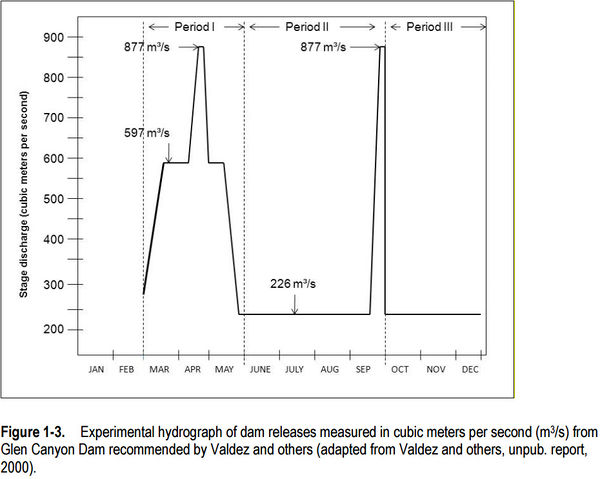Difference between revisions of "Low Summer Flow Experiment"
Cellsworth (Talk | contribs) |
Cellsworth (Talk | contribs) |
||
| Line 88: | Line 88: | ||
|- | |- | ||
| − | ! <h2 style="margin:0; background:#cedff2; font-size:120%; font-weight:bold; border:1px solid #a3bfb1; text-align:left; color:#000; padding:0.2em 0.4em;">Risks</h2> | + | ! <h2 style="margin:0; background:#cedff2; font-size:120%; font-weight:bold; border:1px solid #a3bfb1; text-align:left; color:#000; padding:0.2em 0.4em;">Costs and Risks</h2> |
|- | |- | ||
|style="color:#000;"| | |style="color:#000;"| | ||
| Line 98: | Line 98: | ||
*Increased sediment transport during the high releases in the months prior to the LFS test in order to get the annual volume commitment to the Lower Basin. | *Increased sediment transport during the high releases in the months prior to the LFS test in order to get the annual volume commitment to the Lower Basin. | ||
*Increased the potential for nonnative fish and parasites to proliferate throughout the Grand Canyon. | *Increased the potential for nonnative fish and parasites to proliferate throughout the Grand Canyon. | ||
| + | *The cost to hydropower users from the 2000 LSF was estimated to be $26.4 M, which probably made it the single most expensive science experiment in US history. | ||
|- | |- | ||
| Line 104: | Line 105: | ||
|style="color:#000;"| | |style="color:#000;"| | ||
| − | *Modeling release temperatures far enough in advance to start making releases to meet annual release requirements | + | *Modeling release temperatures far enough in advance to start making releases to meet annual release requirements. |
| − | *Scheduling monthly releases in order to meet annual release requirements while dealing with uncertainties in inflow forecasts | + | *Scheduling monthly releases in order to meet annual release requirements while dealing with uncertainties in inflow forecasts. |
| − | *Short notice for science planning to monitor affects | + | *Short notice for science planning to monitor affects. |
|} | |} | ||
Revision as of 12:10, 3 May 2017
|
|
LTEMP Experimental Action: Aquatic Resource-Related Experimental Treatments (BA, pages 30-41) [1]Low summer flows may be tested in the second 10 years of the LTEMP period, for the purpose of achieving warmer river temperatures (≥14°C) to benefit humpback chub and other native species. Under low summer flows, daily fluctuations would be less than under base operations (e.g., approximately 2,000 cfs). Investigating the anticipated effects of and options for providing warmer water temperatures in the mainstem Colorado River through Grand Canyon is an identified management action in the Humpback Chub Recovery Goals (USFWS 2002a). |
| --- |
--- |
--- |
|---|
|
|
